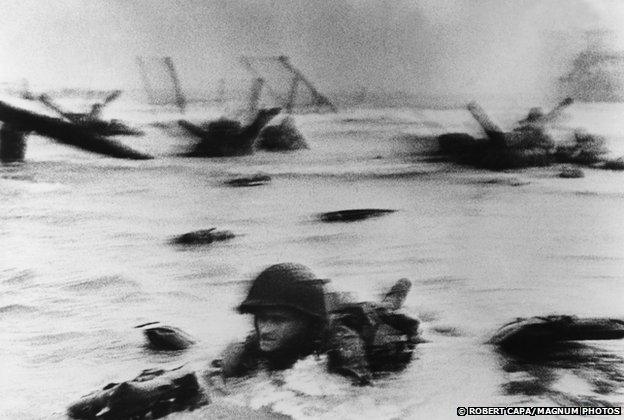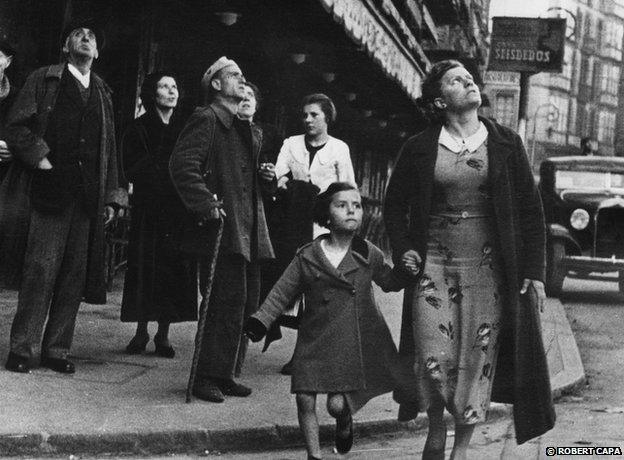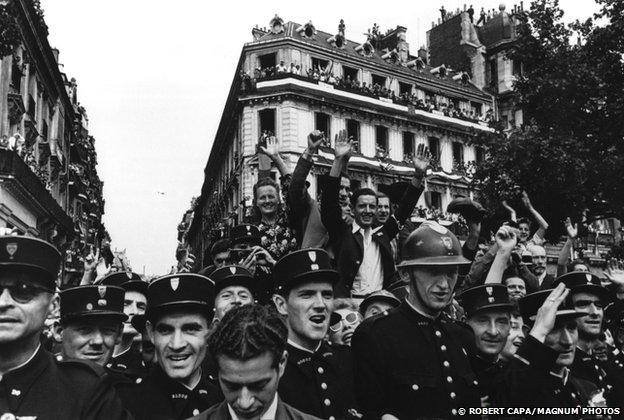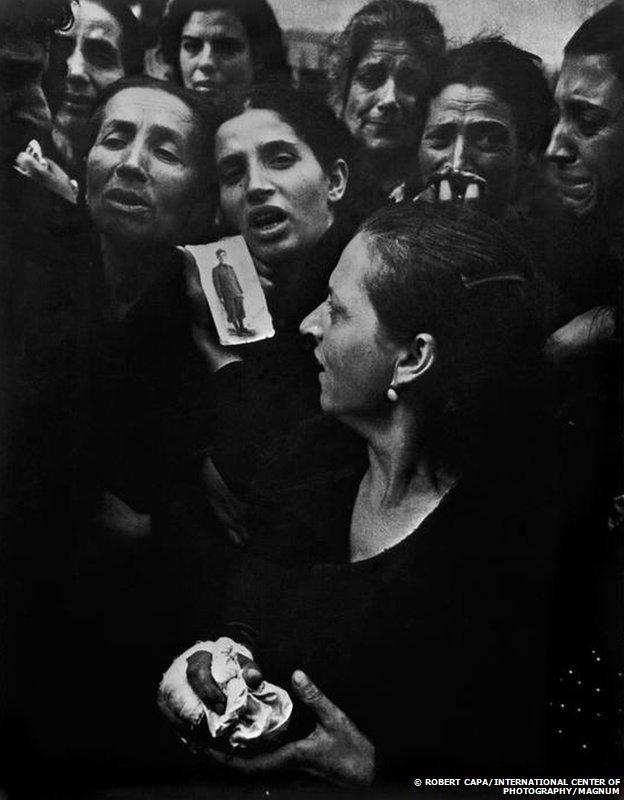Robert Capa's vintage prints on show
- Published

To mark what would have been the 100th birthday of photographer Robert Capa, the Atlas gallery in London is holding an exhibition of his work. It comprises a wide range of prints from his time in Spain during the Civil War through World War II, and ending with the Indo China conflict where he lost his life.
Tales of Capa's exploits are the stuff of legends and his autobiography, Slightly Out of Focus, is a must read for anyone interested in the his life, or indeed photojournalism in the 20th Century.
The pictures are drawn from private collections, the Magnum Photo Archive in London and the estate of Robert Capa's work held by the International Centre of photography, external (ICP) in New York. Many of the images on show are well known, yet some are vintage prints, offering a chance to see an historic document.
The object itself communicates to the viewer, being both a moment from the past and an artefact.
Yet Capa's photographs in the conflict zones of the mid-20th Century were taken for the news magazines of the time and not to hang on gallery walls. Is there a danger that the work becomes art as opposed to a document of record?
"I don't think it is art," says gallery owner Ben Burdett. "I think it is documentary photography, historical records of events. There is a sort of artistic approach to the framing and composing of the images but they definitely aren't art. I am sure he would be appalled if they were seen as art.
"Of course you can see something as art if you want. You can interpret it anyway you like, but I don't think he was an artist, he was a photographer - a photojournalist recording events. It is why it is so great, it is pure photography.
"With the exception of some of his celebrity work which is not on show here, there was no time to think about aesthetic issues other than aiming the camera in the right direction and not being shot."
Perhaps it is this pure approach that explains why Capa is still one of the best known photographers from the past century.
His work is not without controversy. The story behind his picture of the death of a loyalist soldier has been widely debated and quite possibly not exactly what it seems.
Yet Capa is not purely about his pictures. Part of his appeal is the whole aura he built around himself and his work.
"There is something about Capa's character and the stories of him as a person that has a fantastic sort of romance to it," says Burdett. "The fact that he came from Hungary as an unknown, raw emigre to western Europe and created a persona for himself, and a career and life story through sheer determination and force of personality. He managed to be present at all of these major events and turning points at the mid-20th Century.
"Of course he died early in the 1950s at the end of what was the most violent period of modern history. Had he lived for a another three or four months he would have probably survived it and become part of that generation of photographers who built careers as exhibiting photographers, not only in the commercial arena but also the museum world.
"His contemporaries like Henri Cartier-Bresson had another 50 years to become reputable names and their work sold in galleries and to develop their market. Capa died young, so all we have are the works up to that point. A very intense period of time."

One of the prints that caught my eye is that of Trotsky delivering his In Defence of October speech in Denmark in 1932, Capa's first published photograph (above). Alongside the print in the gallery stands the Leica II camera Capa used to take the picture. The camera was given to him by Simon Guttmann, external, owner of the picture agency Dephot that year.
It was sold at auction in WestLicht Auction house in Austria last year along with a number of letters establishing its provenance, showing it had passed from Capa's mother to photographer Lisl Steiner, external in the 1960s.
But what of the market for this work? Burdett says that recent years have seen a colossal explosion of buyers in the art world, something which "even 20 years ago was a sort of aristocratic hobby".
"Buyers today are more focused and more knowledgeable about the history of different photographer's output and careers. Understanding when a print was made allows them to have an informed view of value in terms of types of prints."
That value varies, of course, from £1,000 or so for a relatively recent print to many times that for a vintage one.
The show can be seen at the Atlas Gallery in London until 6 July 2013, external.

People look to the skies in Madrid during an air raid in the Spanish Civil War

Crowds cheers as Paris is liberated on 26 August 1944

The funeral of 20 teenagers who were partisans fighting against the German occupying forces who were killed four days before the liberation of Naples
